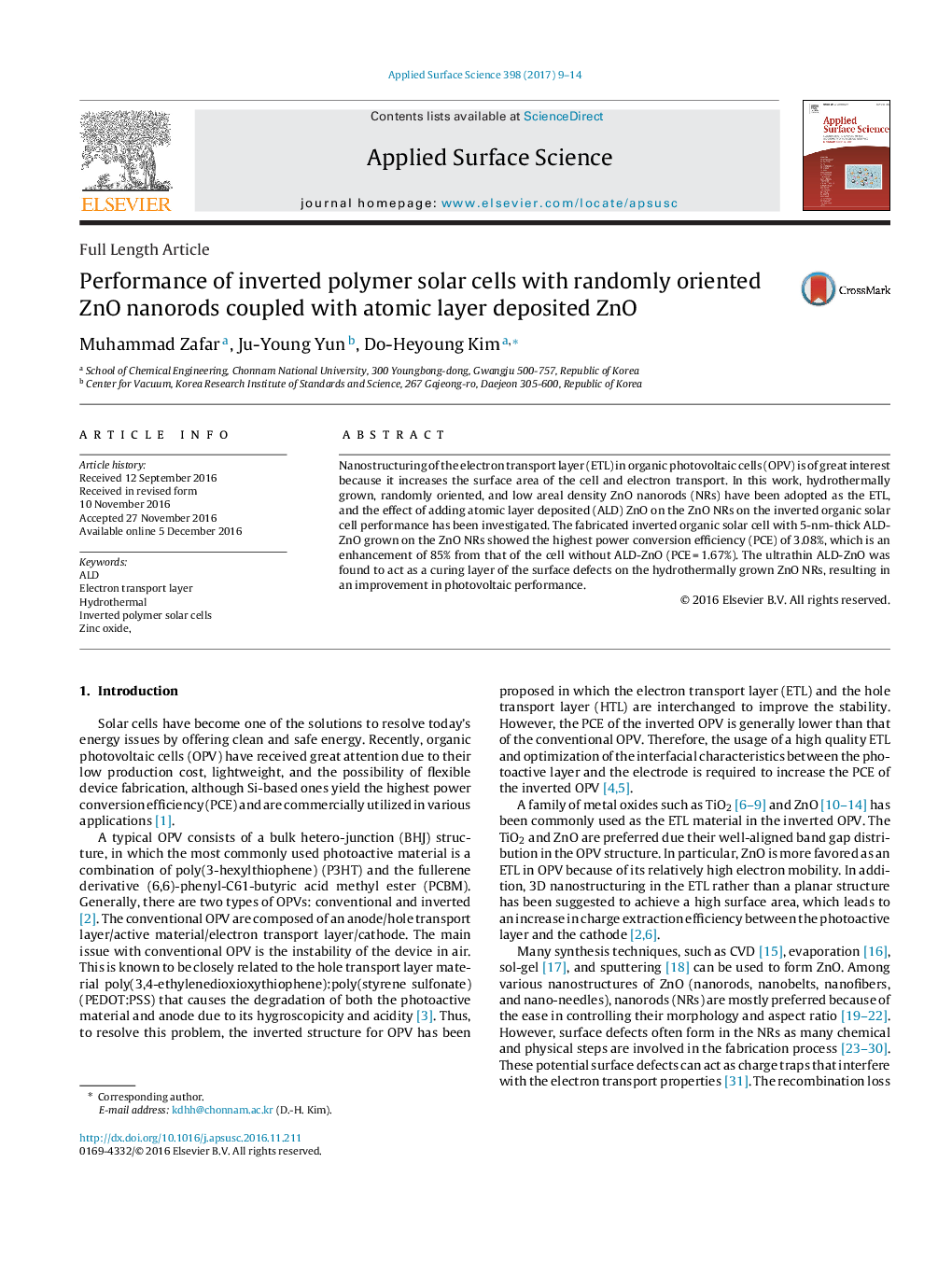| Article ID | Journal | Published Year | Pages | File Type |
|---|---|---|---|---|
| 5351261 | Applied Surface Science | 2017 | 6 Pages |
Abstract
Nanostructuring of the electron transport layer (ETL) in organic photovoltaic cells (OPV) is of great interest because it increases the surface area of the cell and electron transport. In this work, hydrothermally grown, randomly oriented, and low areal density ZnO nanorods (NRs) have been adopted as the ETL, and the effect of adding atomic layer deposited (ALD) ZnO on the ZnO NRs on the inverted organic solar cell performance has been investigated. The fabricated inverted organic solar cell with 5-nm-thick ALD-ZnO grown on the ZnO NRs showed the highest power conversion efficiency (PCE) of 3.08%, which is an enhancement of 85% from that of the cell without ALD-ZnO (PCEÂ =Â 1.67%). The ultrathin ALD-ZnO was found to act as a curing layer of the surface defects on the hydrothermally grown ZnO NRs, resulting in an improvement in photovoltaic performance.
Related Topics
Physical Sciences and Engineering
Chemistry
Physical and Theoretical Chemistry
Authors
Muhammad Zafar, Ju-Young Yun, Do-Heyoung Kim,
